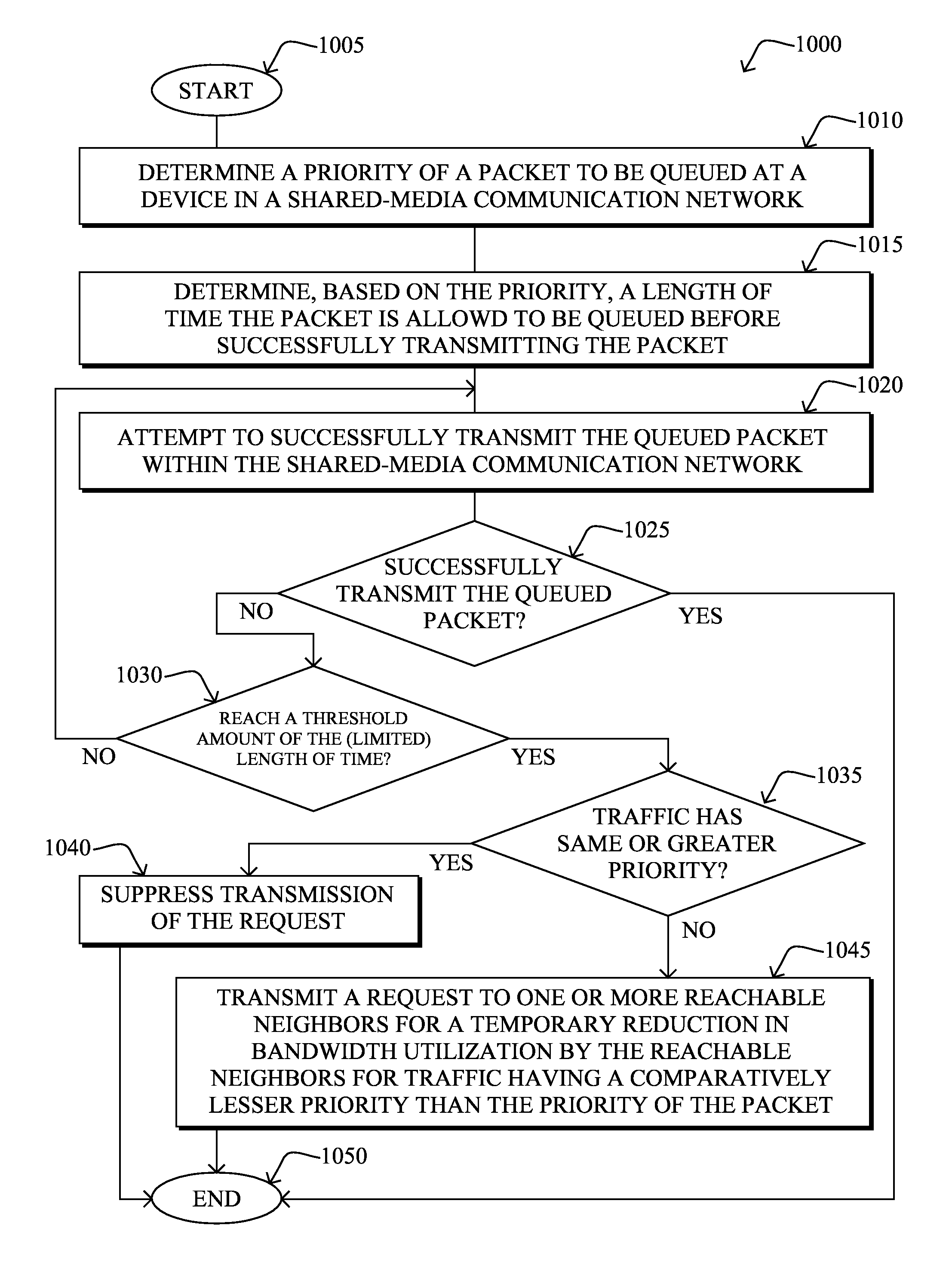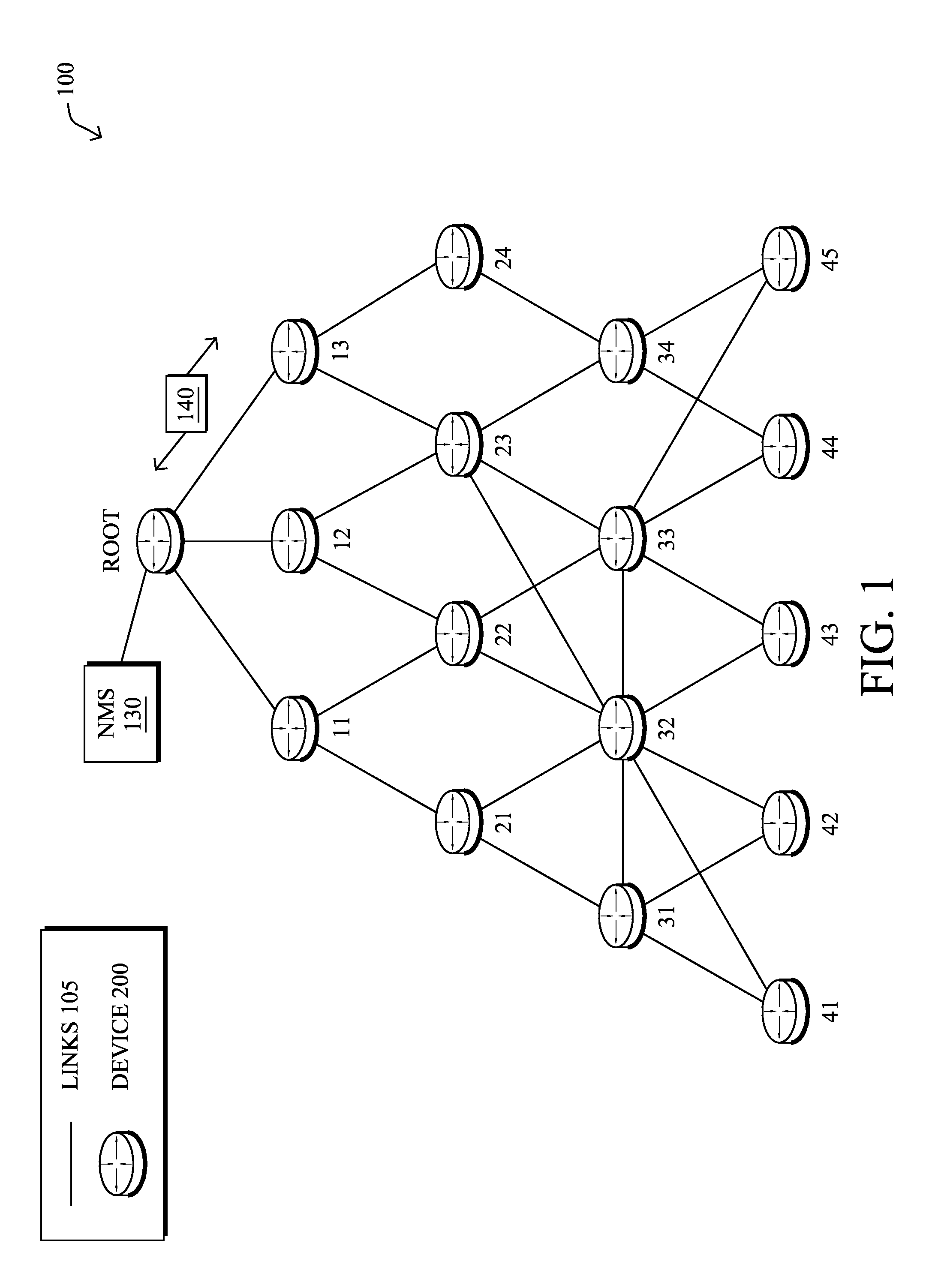Congestion-based traffic shaping for distributed queuing in shared-media communication networks
- Summary
- Abstract
- Description
- Claims
- Application Information
AI Technical Summary
Benefits of technology
Problems solved by technology
Method used
Image
Examples
Embodiment Construction
Overview
[0017]According to one or more embodiments of the disclosure, a device in a shared-media communication network determines a priority of a packet to be queued at the device, and based on the priority determines a length of time the packet is allowed to be queued before being successfully transmitted. After attempting to successfully transmit the queued packet within the shared-media communication network, in response to reaching a threshold amount of the length of time without having successfully transmitted the queued packet, the device may transmit a “shaping” request to one or more reachable neighbors in the shared-media communication network. Specifically, the shaping request is for a temporary reduction in bandwidth utilization by the reachable neighbors for traffic having a comparatively lesser priority than the priority of the packet.
Description
[0018]A computer network is a geographically distributed collection of nodes interconnected by communication links and segment...
PUM
 Login to View More
Login to View More Abstract
Description
Claims
Application Information
 Login to View More
Login to View More - R&D
- Intellectual Property
- Life Sciences
- Materials
- Tech Scout
- Unparalleled Data Quality
- Higher Quality Content
- 60% Fewer Hallucinations
Browse by: Latest US Patents, China's latest patents, Technical Efficacy Thesaurus, Application Domain, Technology Topic, Popular Technical Reports.
© 2025 PatSnap. All rights reserved.Legal|Privacy policy|Modern Slavery Act Transparency Statement|Sitemap|About US| Contact US: help@patsnap.com



